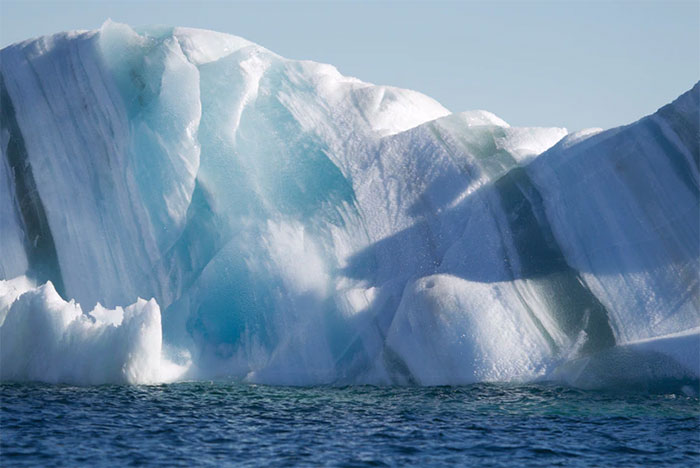Glaciers form when snowflakes accumulate and compact over time. Glaciers cover about 10% of the Earth’s surface and store up to 75% of the planet’s freshwater. They move forward as ice and snow accumulate, and retreat as the ice melts.
At the end of the glacier, also known as the glacier’s terminus, chunks of ice break off and fall into the water. This phenomenon is called calving. The ice chunks that calve become icebergs. Their sizes range from about 2 meters (6.5 feet) in length to massive icebergs as large as a small country.
Icebergs are large chunks of ice found in both the Arctic and Antarctic regions. They are massive, mobile ice formations created when chunks break off from glaciers. Icebergs change shape and even color over time. They serve as hunting grounds for various marine creatures.
Icebergs are formed from frozen freshwater, yet they float on the salty waters of the ocean. They typically last from three to six years, drifting with the waves and can collide with each other or wash ashore.
The waves will erode the edges of the iceberg, creating spectacular arches and caves in the ice. When they scrape against the ocean floor or shore, icebergs can also be sculpted into various shapes. Smaller chunks that break off from the iceberg are known as growlers, which can pose a danger to passing ships.

An iceberg with stripes from sediment it has collected. (Photo: VTC).
Icebergs also host small communities of living organisms, known as ecosystems. These ice formations attract various types of algae, tiny mollusks, and fish. Seabirds, such as the white-faced albatross and penguins, hunt and feed on these marine creatures. Tiny marine organisms known as krill are a delicious meal for the penguins that inhabit the ice.
As icebergs drift into warmer waters or are surrounded by warm air, they begin to melt. As the ice melts into pools of water, cracks form and expand, causing the iceberg to gradually disappear. Only 1/8 of an iceberg is visible above the ocean surface, with the majority submerged underwater.
Icebergs are typically white or blue, but algae living on the ice can create various other colors, including green. Some icebergs contain high levels of iron from rock dust, giving them yellow or reddish hues.
Some icebergs have stripes. These dark stripes originate from soil and sediment that the iceberg collects as it breaks away from the glacier.
Icebergs can take on a variety of shapes, including wedge, dome, or pointed peaks on top. Those with flat tops and steep edges are known as tabular icebergs.


















































